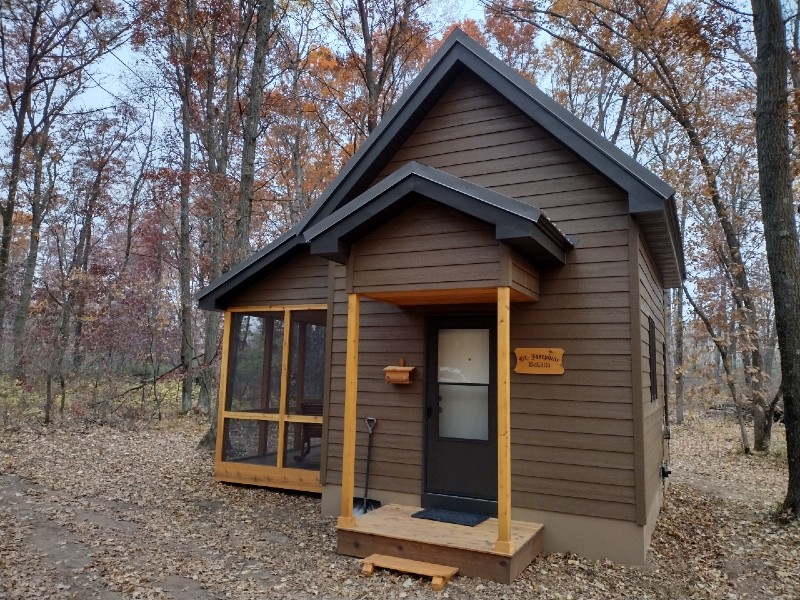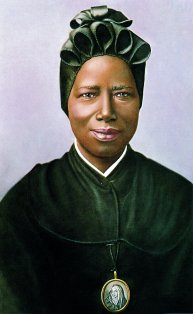St. Josephine Bakhita
 Born around 1869 in Darfur, Sudan, of the Daju people, she was seized by Arab slave traders when she was 7 or 8 and sold and bought numerous times over the course of 12 years, during which she was treated cruelly, abused, whipped, and underwent scarification and tattooing using a razor. A total of 114 intricate patterns were cut into various parts of her body. She was sold to an Italian Vice Council in 1883.
Born around 1869 in Darfur, Sudan, of the Daju people, she was seized by Arab slave traders when she was 7 or 8 and sold and bought numerous times over the course of 12 years, during which she was treated cruelly, abused, whipped, and underwent scarification and tattooing using a razor. A total of 114 intricate patterns were cut into various parts of her body. She was sold to an Italian Vice Council in 1883.
Educated and cared for by the Canossian Sisters in Venice, Italy, she encountered Christianity for the first time. She was freed, under Italian law, in 1889. She chose to remain with the Canossians and was baptized “Josephine Margaret.” She became a Canossian Sister in 1893 and spent the rest of her life at a convent in Schio. During her 42 years in Schio she served as cook, sacristan, and portress (doorkeeper). She was in frequent contact with the local community and was known for her gentleness and calming voice.
 Josephine was once asked by a student, “What would you do, if you were to meet your captors?” Without hesitation, she responded, “If I were to meet those who kidnapped me, and even those who tortured me, I would kneel and kiss their hands. For, if these things had not happened, I would not have been a Christian and a religious today.”
Josephine was once asked by a student, “What would you do, if you were to meet your captors?” Without hesitation, she responded, “If I were to meet those who kidnapped me, and even those who tortured me, I would kneel and kiss their hands. For, if these things had not happened, I would not have been a Christian and a religious today.”
Josephine died on February 8, 1947. She is the patron saint of Sudan and human trafficking survivors.
The Hermitages
- St. Joseph House
- St. Michael the Archangel
- St. Catherine of Siena
- St. John of the Cross
- St. Teresa of Avila
- St. Francis of Assisi
- St. Clare of Assisi
- St. Dominic
- St. Cloud
- St. John the Beloved
- St. Margaret Mary Alacoque
- St. Kateri Tekakwitha
- St. Thérèse of Lisieux
- St. Mary Magdalene
- St. Anthony the Hermit
- St. Paul
- St. Peter
- St. Juan Diego
- St. Josephine Bakhita
- St. Maximilian Kolbe
- Main Building Hermitage Rooms

